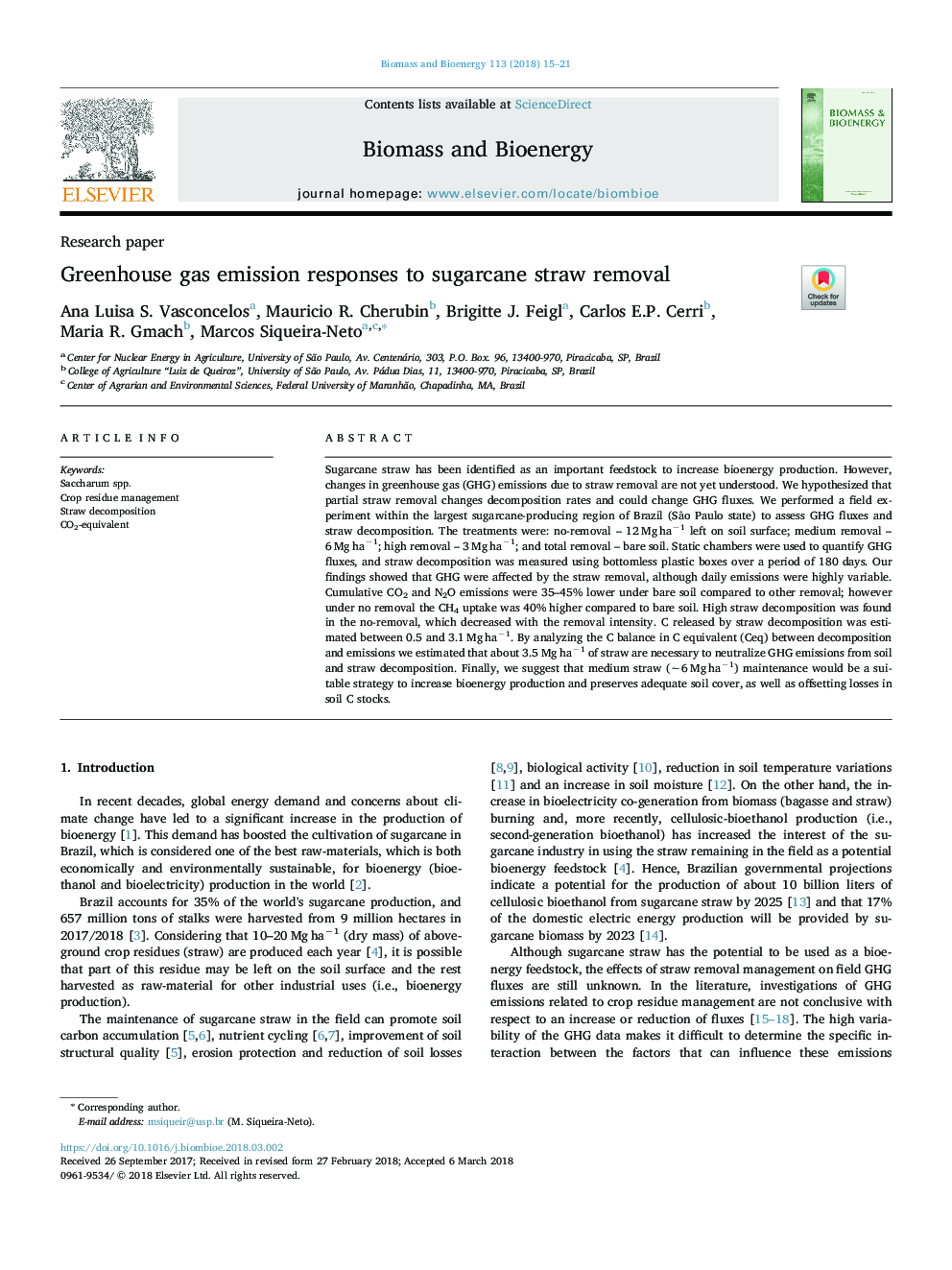| Article ID | Journal | Published Year | Pages | File Type |
|---|---|---|---|---|
| 7062889 | Biomass and Bioenergy | 2018 | 7 Pages |
Abstract
Sugarcane straw has been identified as an important feedstock to increase bioenergy production. However, changes in greenhouse gas (GHG) emissions due to straw removal are not yet understood. We hypothesized that partial straw removal changes decomposition rates and could change GHG fluxes. We performed a field experiment within the largest sugarcane-producing region of Brazil (São Paulo state) to assess GHG fluxes and straw decomposition. The treatments were: no-removal - 12â¯Mgâ¯haâ1 left on soil surface; medium removal - 6â¯Mgâ¯haâ1; high removal - 3â¯Mgâ¯haâ1; and total removal - bare soil. Static chambers were used to quantify GHG fluxes, and straw decomposition was measured using bottomless plastic boxes over a period of 180 days. Our findings showed that GHG were affected by the straw removal, although daily emissions were highly variable. Cumulative CO2 and N2O emissions were 35-45% lower under bare soil compared to other removal; however under no removal the CH4 uptake was 40% higher compared to bare soil. High straw decomposition was found in the no-removal, which decreased with the removal intensity. C released by straw decomposition was estimated between 0.5 and 3.1â¯Mgâ¯haâ1. By analyzing the C balance in C equivalent (Ceq) between decomposition and emissions we estimated that about 3.5â¯Mgâ¯haâ1 of straw are necessary to neutralize GHG emissions from soil and straw decomposition. Finally, we suggest that medium straw (â¼6â¯Mgâ¯haâ1) maintenance would be a suitable strategy to increase bioenergy production and preserves adequate soil cover, as well as offsetting losses in soil C stocks.
Related Topics
Physical Sciences and Engineering
Chemical Engineering
Process Chemistry and Technology
Authors
Ana Luisa S. Vasconcelos, Mauricio R. Cherubin, Brigitte J. Feigl, Carlos E.P. Cerri, Maria R. Gmach, Marcos Siqueira-Neto,
